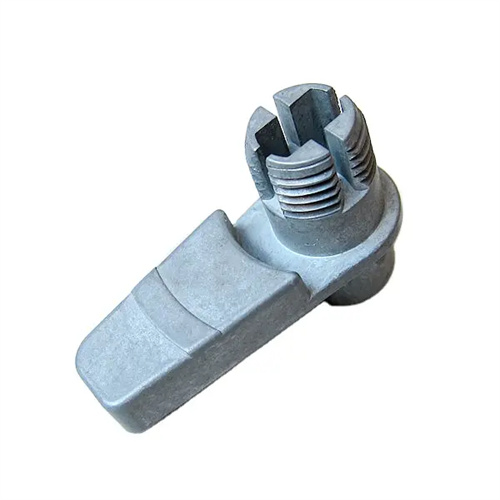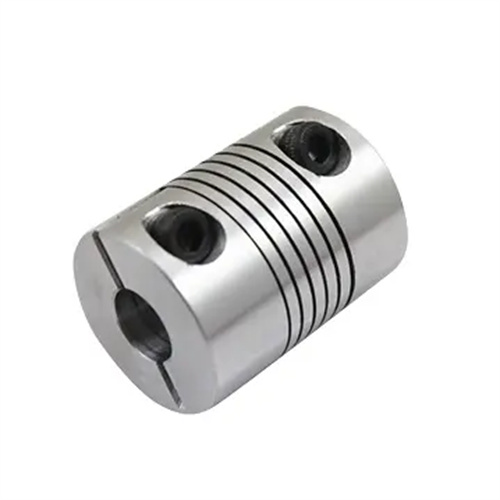Design of the sprue for hot press chamber die casting mold
The sprue of a hot-press die-casting mold is a critical channel connecting the pressure chamber and the runner. Its design directly impacts the efficiency of molten metal delivery, pressure transmission, and the quality of the casting. Compared to cold-press die-casting molds, the sprue of a hot-press die-casting mold is constantly immersed in high-temperature molten metal and must simultaneously meet the requirements of high-temperature resistance, erosion resistance, and low flow resistance, making its design more challenging. The sprue design primarily involves structural form, dimensional parameters, material selection, and coordination with the pressure chamber. It must be tailored to the characteristics of the hot-press die-casting machine and the properties of the alloy material.

The sprue structure must match the pressure chamber outlet of the hot chamber die-casting machine. Common configurations include vertical, inclined, and curved. The vertical sprue is the most commonly used. Its axis coincides with the pressure chamber axis, allowing the molten metal to flow vertically downward into the runner. This results in a short flow path and low resistance, making it suitable for most small and medium-sized castings, such as zinc alloy toy parts and small electrical appliance accessories. The inclined sprue, with its axis at a 15°-45° angle to the pressure chamber axis, is suitable for applications where mold height is limited or the cavity is positioned off-center from the pressure chamber. This inclined design shortens the sprue length and reduces pressure loss. However, care should be taken to avoid excessive inclination, as this can cause abrupt changes in the molten metal flow direction, generating eddies and air entrainment. The curved sprue uses a circular transition with a radius of 50mm-150mm, allowing the molten metal to flow smoothly along the arc. It is suitable for large or high-precision castings and can effectively reduce flow resistance and pressure loss. However, it is more difficult to manufacture and requires CNC machining to ensure arc accuracy. In actual design, vertical or curved sprues should be given priority to ensure the smoothness of molten metal flow to the greatest extent possible while meeting the mold structure requirements.

The sprue’s dimensional parameters, primarily including diameter, length, and taper, are determined based on the chamber diameter and the required flow rate of the casting. The sprue’s inlet diameter should match the chamber’s outlet diameter, typically 0.5mm-1mm larger, to ensure smooth, leak-free entry of the molten metal. For a chamber diameter of 20mm-50mm, the sprue’s inlet diameter can be set to 20.5mm-51mm. The sprue’s length should be kept as short as possible, generally no longer than 100mm, to minimize heat loss and pressure drop during molten metal delivery. For large molds, the sprue’s length can be shortened by optimizing the mold structure, or its diameter can be increased to compensate for pressure loss. The sprue’s taper is crucial. A positive taper of 0.5°-2° (inlet diameter smaller than outlet diameter) is typically used to facilitate molten metal flow and slurry release. The taper’s direction should align with the direction of molten metal flow to avoid slurry sticking caused by a reverse taper. For materials with good fluidity such as zinc alloy, the taper can be taken to the lower limit (0.5°-1°); for materials with slightly poor fluidity such as aluminum alloy, the taper can be taken to the upper limit (1°-2°) to reduce flow resistance.

The design of the sprue and pressure chamber must ensure sealing performance and positioning accuracy to prevent molten metal leakage and mold misalignment. A positioning step or guide cone should be installed at the sprue inlet, and the clearance between the sprue and the pressure chamber outlet should be controlled between 0.05mm and 0.1mm. This ensures accurate positioning while preventing wear caused by an overtight fit. The mating surfaces must be precision-machined to a flatness tolerance of no more than 0.01mm/100mm and a surface roughness of less than Ra0.8μm to ensure a tight fit and reduce the risk of molten metal leakage. For high-pressure hot-chamber die-casting machines (injection pressure ratio >80MPa), a sealing ring groove should be installed at the sprue inlet, using high-temperature-resistant asbestos or metal sealing rings to further enhance sealing performance. Furthermore, the coaxiality error between the sprue and pressure chamber must be controlled within 0.1mm. Positioning mechanisms such as guide pins and sleeves ensure precision during mold installation to prevent turbulent molten metal flow and mold wear caused by coaxiality deviation.

The material selection and heat treatment process for the sprue must be suitable for high-temperature and high-pressure operating environments. Commonly used materials are H13 hot-work die steel or 3Cr2W8V, which offer excellent high-temperature strength, wear resistance, and thermal fatigue resistance. The material’s chemical composition must be strictly controlled, with a carbon content between 0.32% and 0.45% and a chromium content between 11% and 13% to ensure sufficient hardness and toughness. The heat treatment process utilizes a “quenching and tempering” process, with a quenching temperature of 1020°C to 1050°C and a tempering temperature of 580°C to 620°C. The hardness is controlled between 45 and 50 HRC, ensuring wear resistance while avoiding brittle fracture caused by excessive hardness. For molds used in the long-term production of high-melting-point alloys (such as aluminum alloys), the sprue surface can be nitrided to form a nitride layer 0.03mm to 0.05mm thick, raising the hardness to over 60 HRC. This significantly improves wear resistance and adhesion resistance, extending mold life.

The sprue cooling system design must balance the fluidity of the molten metal and the thermal stability of the mold. Although the sprue of a hot press die-casting mold is exposed to high temperatures, proper cooling can prevent mold deformation and wear caused by overheating. Cooling water channels can be located around the sprue, 15-25 mm from the outer wall. Circular channels with a diameter of 8-12 mm should be used, with a flow rate controlled at 1-2 m/s to ensure uniform cooling. For small sprues (diameter <30 mm), a single-loop channel design is suitable; for large sprues (diameter >30 mm), a double-loop or spiral channel design is required to improve cooling efficiency. The cooling system design must avoid compromising the structural strength of the sprue. The wall thickness between the water channel and the sprue should be at least 10 mm to prevent stress concentration. Furthermore, the cooling water temperature should be controlled between 50°C and 80°C, with a minimum temperature difference of 50°C from the mold operating temperature to prevent mold cracking due to thermal shock. Through reasonable cooling design, the operating temperature of the sprue can be stabilized at 250℃-400℃ (adjusted according to the alloy material), ensuring the fluidity of the molten metal and the service life of the mold.
